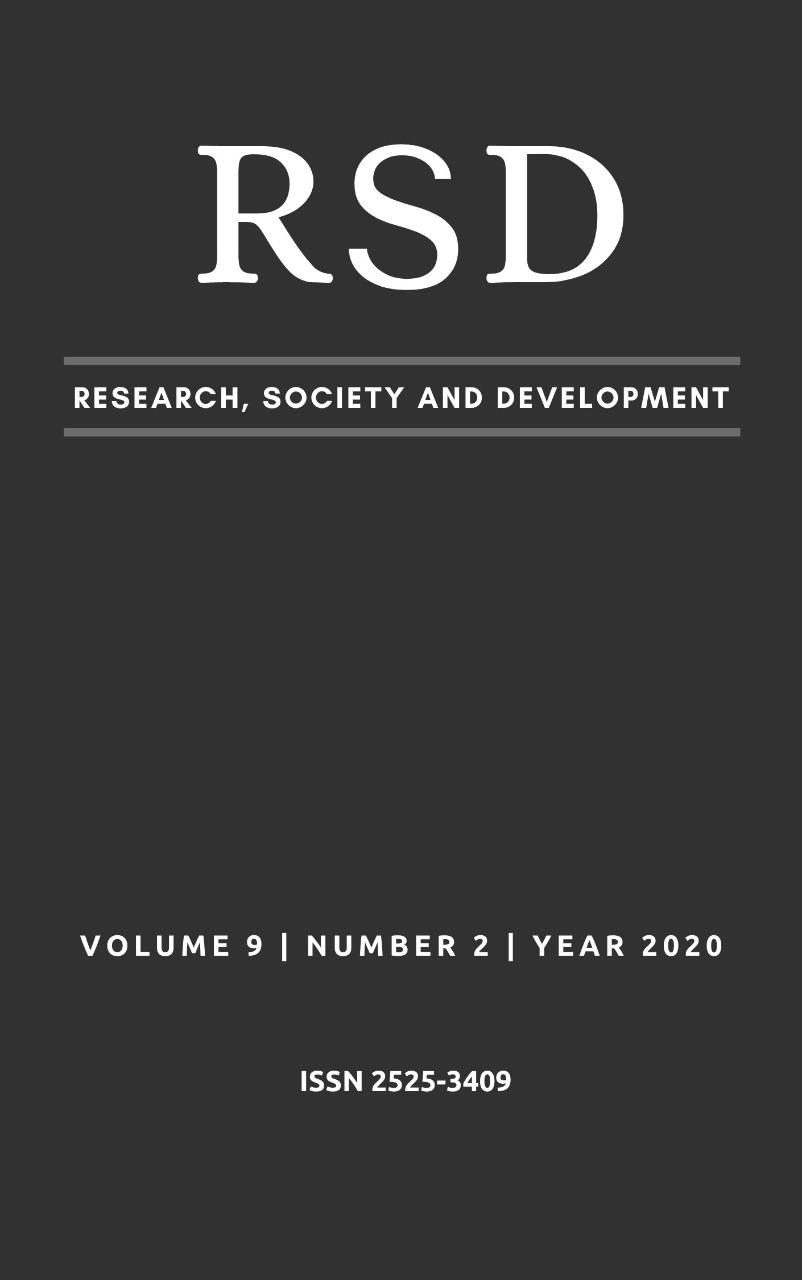Validação de Conteúdo de um Instrumento para Mensuração do Conhecimento sobre Musculação, Alimentação e Suplementação
DOI:
https://doi.org/10.33448/rsd-v9i2.1972Palavras-chave:
Treinamento resistido, Alimentação, Suplementação alimentar.Resumo
Este estudo teve o objetivo de elaborar e validar o conteúdo de um instrumento para avaliar os conhecimentos sobre musculação, alimentação e suplementação. Trata-se de um estudo em que foi aplicado um protocolo de validação de conteúdo a profissionais de educação física e nutrição para o julgamento dos itens. Para tanto, foram elaborados 25 itens de múltipla escolha com quatro alternativas, com apenas uma correta. Para avaliação dos itens por especialistas, utilizou-se um instrumento elaborado pelo próprio autor, o Protocolo de Validação de Conteúdo (PVC), que foi utilizado com objetivo de ser uma via de análise e julgamento dos itens para juízes avaliadores desta pesquisa. O PVC foi estruturado para analisar clareza e o nível de relevância dos itens em uma escala likert de quatro pontos, em que o primeiro se considerou como “não relevante” e o último como “muito relevante”, esse processo foi individualizado por questão. Após serem submetido aos especialistas e analisados pelo Índice de Validade de Conteúdo (IVC), foram validados 22 itens que poderão ser aplicados em pesquisas futuras.
Referências
Alexandre, N. M. C. & Coluci, M. Z. O. (2011). Validade de conteúdo nos processos de construção e adaptação de instrumentos de medidas. Ciência & Saúde Coletiva, 16(7), 3061–3068. doi: http://dx.doi.org/10.1590/S1413-81232011000800006
Berne, R. M. & Levy, M. N. (2009). Fisiologia. 6 ed. São Paulo: Elsevier.
Bompa, T. & Buzzichelli, C. (2015). Periodization training for sports. 3 ed. Champaign: Human Kinetics.
Brasil. Ministério da Casa Civil. (1991). “Lei n. 8234 de 17 de setembro de 1991”. Ministério da Casa Civil.
Fahey, T. S. (2014). Bases do treinamento de força para homens e mulheres. In: Base do Treinamento de Força. 8 ed. Porto Alegre: AMGH.
Hernandez, A. J. & Nahas, R. M. (2009). Modificações dietéticas, reposição hídrica, suplementos alimentares e drogas: comprovação de ação ergogênica e potenciais riscos para a saúde. Revista Brasileira de Medicina do Esporte, 15(3), 3–12. doi: http://dx.doi.org/10.1590/S1517-86922009000400001
Heyward, V. H. (2013). Avaliação física e prescrição de exercício: técnicas avançadas. 6 ed. Porto Alegre: Artmed.
Kim, J. H. (2018). The effects of daily food ingestion on improved immune functions and health promotion of bodybuilding athletes. Journal of Exercise Rehabilitation, 14(15), 791-801. doi: https://dx.doi.org/10.12965%2Fjer.1836424.212
Mahan, L. K. & Raymond, J. L. Alimentos, nutrição & dietoterapia. 14 ed. São Paulo: Elsevier.
Maier, M. J., Haeussinger, F. B., Hautzinger, M., Fallgatter, A. J., & Ehlis, A. C. (2017). Excessive bodybuilding as pathology? A first neurophysiological classification. The World Journal of Biological Psychiatry, 18(5), 619-629. doi: https://doi.org/10.1080/15622975.2017.1395070
Marques, N. F., Marques, A. C., Fanti, Y. O., & Moura, F. A. (2015). Consumo alimentar e conhecimento nutricional de praticantes de musculação do município de Itaqui-RS. Revista Brasileira de Nutrição Esportiva, 9(52), 288–297.
Martins, C. et al. (2016). High-intensity interval training and isocaloric moderate intensity continuous training result in similar improvements in body composition and fitness in obese individuals. International journal of sport nutrition and exercise metabolismo, 26(3), 197-204. doi: https://doi.org/10.1123/ijsnem.2015-0078
Mcardle, W. D., Katch, F. I., & Katch, V. L. (2016). Fisiologia do exercício: nutrição, energia e desempenho humano. 8 ed. São Paulo: Guanabara Koogan.
Nicholls, R., Perry, L., Duffield, C., Gallagher, R., & Pierce, H. (2017). Barriers and facilitators to healthy eating for nurses in the workplace: an integrative review. Journal of advanced nursing, 73(5), 1051-1065. doi: https://doi.org/10.1111/jan.13185
Richardson, R. J. (2012). Pesquisa social: métodos e técnicas. 3.ed. São Paulo: Atlas.
Slater, L. V. & Hart, J. M. (2017). Muscle activation patterns during different squat techniques. Journal of strength and conditioning research, 31(3), 667-676. doi: https://doi.org/10.1519/JSC.0000000000001323
Villareal, D. T. et al. (2017). Aerobic or resistance exercise, or both, in dieting obese older adults. The New England Journal of Medice, 376(20), 1943-1955. doi: https://doi.org/10.1007/s11690-017-0592-7
Zilch, M. C. et al. (2012). Analise da ingestão de proteínas e suplementação por praticantes de musculação nas academias centrais da cidade de Guarapuava-PR. Revista Brasileira de Nutrição Esportiva, 6(35), 381–388.
Downloads
Publicado
Edição
Seção
Licença
Autores que publicam nesta revista concordam com os seguintes termos:
1) Autores mantém os direitos autorais e concedem à revista o direito de primeira publicação, com o trabalho simultaneamente licenciado sob a Licença Creative Commons Attribution que permite o compartilhamento do trabalho com reconhecimento da autoria e publicação inicial nesta revista.
2) Autores têm autorização para assumir contratos adicionais separadamente, para distribuição não-exclusiva da versão do trabalho publicada nesta revista (ex.: publicar em repositório institucional ou como capítulo de livro), com reconhecimento de autoria e publicação inicial nesta revista.
3) Autores têm permissão e são estimulados a publicar e distribuir seu trabalho online (ex.: em repositórios institucionais ou na sua página pessoal) a qualquer ponto antes ou durante o processo editorial, já que isso pode gerar alterações produtivas, bem como aumentar o impacto e a citação do trabalho publicado.


